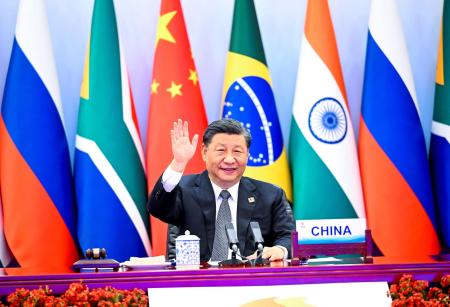Authors: Jingdong Yuan, Fei Su, Xuwan Ouyang
Affiliation: SIPRI and University of Sydney, SIPRI, intern with the SIPRI China and Asia Security Programme
Organization/Publisher: SIPRI
Date/Place: May 2022/ Stockholm, Sweden
Type of Literature: Report
Number of Pages: 44
Link:https://www.sipri.org/publications/2022/sipri-policy-papers/chinas-evolving-approach-foreign-aid
Keywords: China, Foreign Aid, International Development Cooperation, Belt and Road Initiative, Governance, UN 2030 Agenda for Sustainable Development
Brief:
This report analyzes how China’s contributions to internal development have evolved over the years and how it serves the country’s foreign and strategic interests. With its Belt and Road Initiative (BRI) at its core, Beijing’s emphasis has been on cooperation, partnership and mutual benefits between China and recipient countries. The report says a new assessment of China’s investments outside the country “is needed.” Africa has been the favorite destination of Chinese money—mostly interest-free loans—and technology, showcasing the country’s combined “geostrategic, foreign policy and economic considerations.” Divided into eight different models, the Chinese grants were “mainly provided for small- and medium-sized social welfare projects and for supporting activities related to material assistance, human resource development cooperation and medical assistance.” Chinese interest-free loans have mostly been used to construct public facilities and projects related to local livelihood improvement. Beijing’s policy has been to link its international development contributions through the BRI to the United Nations 2030 Agenda for Sustainable Development Goals. These contributions have also helped China to improve its image globally and “increase its discourse power in international affairs.” Beijing has pushed its international development aid since 2000. It was in 1950 that Beijing first sent its consignments of aid to North Korea and Vietnam. Data shows China’s aid expenditure averaged 5.8% of its total government budget while money spent overseas peaked at 6.9% in 1973. This paper also notes how “prioritization” of domestic political considerations “over economic realities had resulted in Chinese aid being dominated by request-centric and turnkey modalities.” While China has been widely accused (without any evidence) of debt-trap diplomacy, this report shows that since 2000 Beijing has “started cancelling the debt” through its debt-relief program.
By: Riyaz ul Khaliq, CIGA Non-resident Research Associate




